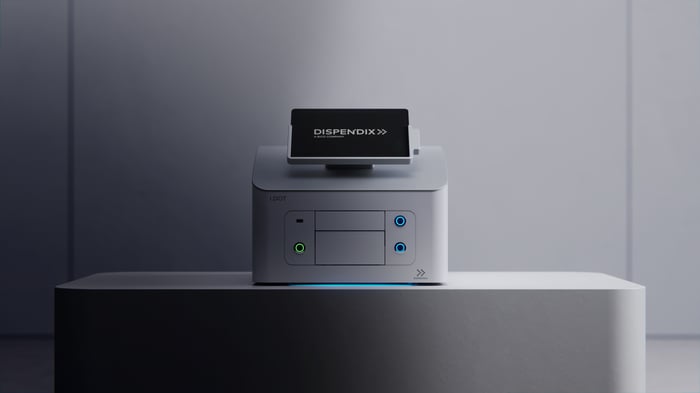Rare disease research is important for finding the genetic causes of uncommon diseases, which enables the development of new strategies and the repurposing of pre-existing drugs1. A single nucleotide variant can cause disease in many cases, so incredibly accurate sequencing workflows are needed to identify causal mutations. Furthermore, the infrequency of rare diseases means primary samples can be hard to obtain, and errors during handling and sequencing workflows can have disastrous consequences for research efforts. This article will cover liquid handling solutions in rare disease research and how they contribute to improved research outcomes2.
The Role of Automated Liquid Handling in Rare Disease Research
Definition of Automated Liquid Handling
Automated liquid handling involves the precise dispensing and manipulation of liquid to provide faster, more accurate research workflows. In biomedical research, automated liquid handling typically involves dispensing tiny volumes at a rate that far exceeds manual handling methods (Fig. 1)3. These processes outperform manual pipetting techniques in nearly every aspect, making them incredibly valuable for rare disease research.

Figure 1. The I.DOT Liquid Handler can dispense volumes as low as 0.1 nanoliter and provides accurate liquid handling for next-generation sequencing (NGS) experiments used in rare disease research.
Key Benefits for Rare Disease Studies
Automated liquid handling solutions have several benefits for rare disease research.
- Faster research timelines. Automated liquid handling means rare disease research projects are completed in shorter timelines. This accelerates the generation of crucial insights, potentially leading to the development of new therapies4.
- More accurate results. Automated liquid handling solutions increase the quality and reproducibility of results by providing more accurate dispensing.
- Lower volumes. Automated liquid handling facilitates the use of lower sample volumes, ensuring researchers can gain insights from even small sample volumes.
Innovative Technologies in Automated Liquid Handling
High-throughput Screening Systems
High-throughput screening (HTS) systems are fantastic for performing compound or CRISPR screening. Causal variants identified through sequencing can be introduced into cells, which can serve as models for testing various drugs or genetic modifications to produce therapeutic effects5,6. Automated liquid handling allows HTS to be performed quickly and accurately.
Microfluidic Devices
Automated microfluidics devices allow for the manipulation of tiny liquid volumes, helping to maximize the utilization of rare samples7. The I.DOT Liquid Handler facilitates the dispensing of liquids as low as 0.1 nanoliters and uses non-contact dispensing to virtually eliminate chances of cross-contamination.
Acoustic Liquid Handling
This technology uses sound waves to dispense and manipulate tiny volumes of liquid without physical contact with dispensing machinery (Fig. 2)8. This reduces the need for consumables, enables high-throughput processes, and significantly decreases the chances of contamination.

Figure 2. Acoustic liquid handlers use sound waves to manipulate tiny water droplets for various applications. (Source)
Improving Research Outcomes
Increased Reproducibility of Experiments
Automated liquid handling solutions can consistently perform standardized procedures, decreasing inter-institution variation and facilitating better data sharing and collaboration between institutions9.
Reduced Sample and Reagent Consumption
Automation in liquid handling means that workflows can be miniaturized, and therefore, fewer reagents and consumables are required. This leads to resource efficiency and a more environmentally friendly approach to biomedical research4.
The G.PREP NGS Automation system integrates the I.DOT Liquid Handler and the G.PURE NGS Clean-Up Device allowing workflow miniaturization.
Download the Twist Enzymatic Fragmentation 2.0 SOP, which highlights the amazing potential of the G.PREP NGS Automation system in next-generation sequencing workflows.
Accelerated Drug Discovery Processes
More accurate and faster experiments with high-throughput capabilities allow research projects to progress quickly, enabling the rapid identification of drug candidates. This speeds up the drug discovery process and supports the treatment and management of rare diseases.
Emerging Trends
Advancements in Nanoliter-scale Liquid Handling
Microfluidics. Increasingly advanced microfluidics systems enable nanoliter-scale liquid handling. These capabilities remove the need for larger laboratory equipment and can perform precise manipulations on incredibly small surfaces7. This is sometimes called lab-on-a-chip, which can perform mixing and dilution at tiny scales.
Capillary-based systems. Capillary action is a physical phenomenon that allows liquids to be manipulated at the nanoliter scale10. This technology is used primarily for diagnostics and environmental testing.
Conclusion
Innovative liquid handling solutions are revolutionizing rare disease research by enabling faster, more accurate, and resource-efficient workflows. Technologies like HTS and microfluidic devices optimize the use of precious samples and reduce the risk of contamination. By increasing reproducibility, minimizing sample consumption, and accelerating drug discovery processes, automated liquid handling is crucial in advancing our understanding and treatment of rare diseases, offering hope for improved patient outcomes and breakthroughs in personalized medicine.
Ready to accelerate your research?
Discover how DISPENDIX can enhance precision, efficiency, and reproducibility in your lab. Download the I.DOT brochure or the G.PREP brochure and take the next step in transforming your workflows!
References
- Griggs RC, Batshaw M, Dunkle M, et al. Clinical research for rare disease: opportunities, challenges, and solutions. Mol Genet Metab. 2009;96(1):20-26. doi:10.1016/j.ymgme.2008.10.003
- Garcia M, Downs J, Russell A, Wang W. Impact of biobanks on research outcomes in rare diseases: a systematic review. Orphanet J Rare Dis. 2018;13(1):202. doi:10.1186/s13023-018-0942-z
- O’Neill MD. Increasing Throughput with Automated Liquid Handling. Genet Eng Biotechnol News. 2012;32(12):18-21. doi:10.1089/gen.32.12.06
- Holland I, Davies JA. Automation in the Life Science Research Laboratory. Front Bioeng Biotechnol. 2020;8:571777. doi:10.3389/fbioe.2020.571777
- Bellomo F, De Leo E, Taranta A, et al. Drug Repurposing in Rare Diseases: An Integrative Study of Drug Screening and Transcriptomic Analysis in Nephropathic Cystinosis. IJMS. 2021;22(23):12829. doi:10.3390/ijms222312829
- Li Q, Gao Y, Wang H. CRISPR-Based Tools for Fighting Rare Diseases. Life (Basel). 2022;12(12):1968. doi:10.3390/life12121968
- Duncombe TA, Tentori AM, Herr AE. Microfluidics: reframing biological enquiry. Nat Rev Mol Cell Biol. 2015;16(9):554-567. doi:10.1038/nrm4041
- Nebane NM, Coric T, McKellip S, et al. Acoustic Droplet Ejection Technology and Its Application in High-Throughput RNA Interference Screening. J Lab Autom. 2016;21(1):198-203. doi:10.1177/2211068215620346
- More D, Khan N, Tekade RK, Sengupta P. An Update on Current Trend in Sample Preparation Automation in Bioanalysis: strategies, Challenges and Future Direction. Critical Reviews in Analytical Chemistry. Published online July 2024:1-25. doi:10.1080/10408347.2024.2362707
- Squires TM, Quake SR. Microfluidics: Fluid physics at the nanoliter scale. Rev Mod Phys. 2005;77(3):977-1026. doi:10.1103/RevModPhys.77.977